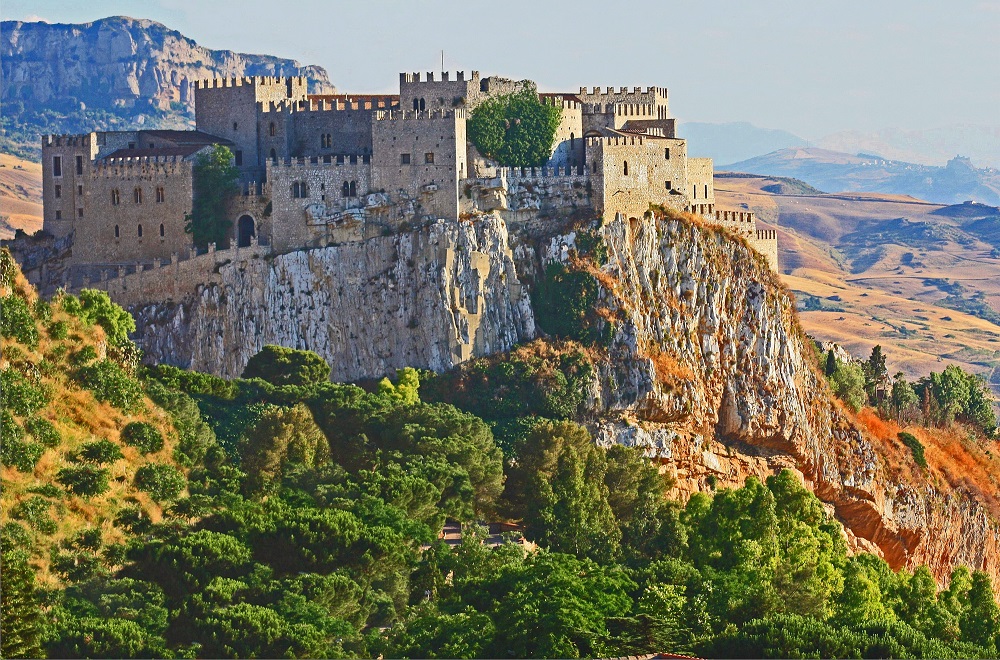
Read English version
Su una grande rupe che domina la valle del fiume San Leonardo, si erge, maestoso, il castello di Caccamo, tra i più grandi dell’intera Isola. Il primo impianto del Castello fu, molto probabilmente, una torre di avvistamento ma nel corso dei secoli successivi la struttura è stata gradualmente trasformata divenendo uno dei manieri appartenuto alle più nobili e potenti famiglie siciliane: i Chiaramonte, i Prades, i Cabrera, gli Henriquez, gli Amato, i De Spuches…
Nel 1160 Matteo Bonello, uno dei primi proprietari del castello e acerrimo nemico del re Guglielmo I detto il Malo, ordisce e capeggia la congiura dei baroni siciliani contro il re. Lelsa della spada con la quale, secondo una leggenda nata in età romantica, il Bonello uccise Maione di Bari infido gran cancelliere e grandammiraglio di Guglielmo I, si può ancora vedere su uno dei battenti della porta dellArcivescovado di Palermo di fronte alla Cattedrale.
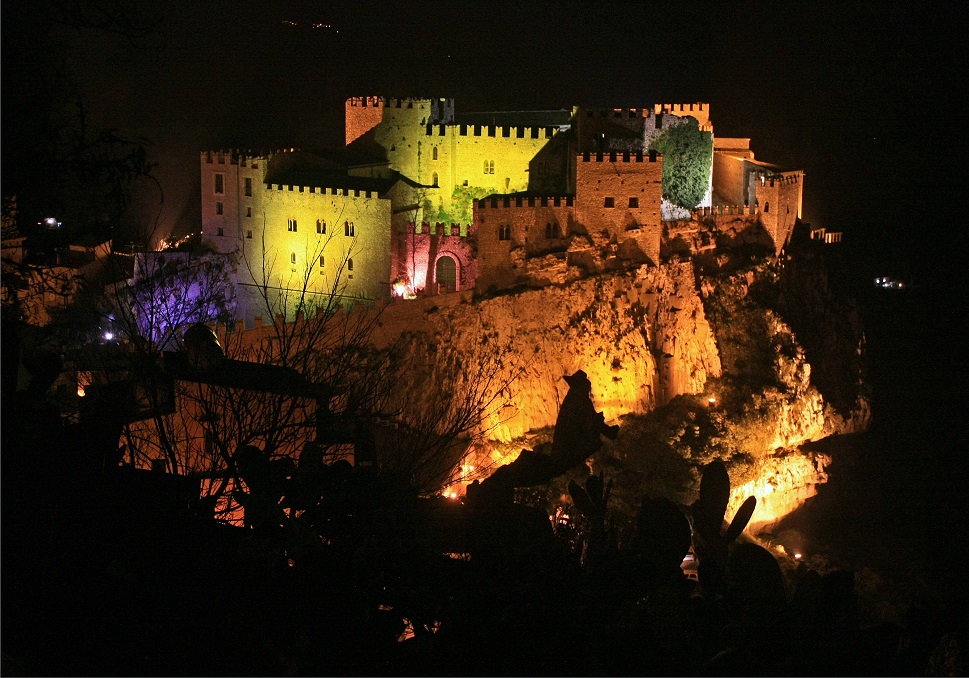
Con l’ avvento della nobile e potente famiglia palermitana dei Chiaramonte (1300-1392), il castello venne ampiamente fortificato e rafforzato. Il casato resse per quasi un secolo e poco prima del 1400 arrivò la sua fine: il 1° giugno Andrea Chiaramonte venne condannato a morte e decapitato nella piazza Marina di Palermo dinanzi al proprio palazzo, lo Steri, costruito da Manfredi I considerato proprio il simbolo della potenza chiaramontana.
Nel 1398 Don Giaimo De Prades, nuovo signore di Caccamo, ingrandì e nobilitò il Castello potenziandolo dal punto di vista difensivo. Tutto ciò che il Castello ci mostra alla nostra sinistra percorrendo la rampa d’accesso è appunto opera quattrocentesca. Agli inizi del secolo XV la signoria di Caccamo passò ai Cabrera sotto il cui dominio la città conobbe un periodo di vere e profonde trasformazioni, sia sotto il profilo economico che sociale. Nel 1641 Don Giovanni Henriquez de Cabrera viene nominato viceré di Sicilia e due anni dopo eleva Caccamo al rango di città.
Agli Henriquez seguì la signoria di Don Filippo Amato principe di Galati. Saranno gli Amato ad apportare ulteriori modifiche al Castello come la poderosa merlatura al sistema murario, mentre la parte Sud del maniero venne completamente ricostruita ad abituale residenza baronale perdendo così ogni traccia di architettura medievale. Nel 1813 la signoria di Caccamo passò ai De Spuches, fra di essi eccelse il principe – duca Giuseppe illustre archeologo e poeta, forbito grecista e marito della poetessa Giuseppina Turrisi Colonna. Mecenate e protettore, il De Spuches accoglieva nel suo Castello artisti e poeti che declamavano le loro creazioni.
Dopo gli Amato gli interventi di manutenzione si fanno sempre meno frequenti ed il degrado delle strutture diviene sempre più progressivo. Nel 1963 il principe di Galati e duca di Caccamo Antonio De Spuches, impossibilitato a far fronte alle spese di restauro del castello, cedette la nobile dimora alla Regione Siciliana. Da allora si sono susseguiti progetti per il ripristino dell’ edificio. Completati i lavori di restauro il maniero oggi è aperto al pubblico.
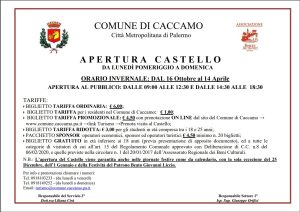
* English
The Castle of Caccamo, one of the largest castles in the whole Island, stands majestic on a large cliff overlooking the San Leonardo River Valley far below. The first site was probably a watchtower, but over the following centuries the structure was gradually modified to become one of the manors which belonged to the noblest and most powerful Sicilian families: the Chiaramontes, the Padres family, the Cabreras, the Henriquez family, the Amatos, the De Spuches family
In 1160 Matteo Bonello, one of the first owners of the castle and bitter enemy of King William I, called the Bad or the Wicked, weaves and leads the conspiracy of Sicilian barons against the king. According to a legend appeared in the Romantic Age for the first time, the hilt of the sword used by Bonello to kill Maione di Bari, the “treacherous” High Chancellor and Grand Admiral of William I, can be still found on one gate door of the Archbishops Palace of Palermo before the Cathedral.
Thanks to the advent of the powerful and noble family of Chiaramonte from Palermo (1300-1392), the castle was extensively fortified and strengthened. The family ruled for nearly a century and shortly before 1400 it reached its end: on June 1st Andrea Chiaramonte was sentenced to death and beheaded in Marina Square in Palermo before his own palace, “Steri Palace”, built by Manfredi I considered just the Chiaramonte symbol of power. In 1398 Don Giaimo De Prades, new Signore di Caccamo, enlarged and made it noble powering up the castle from the defensive point of view.
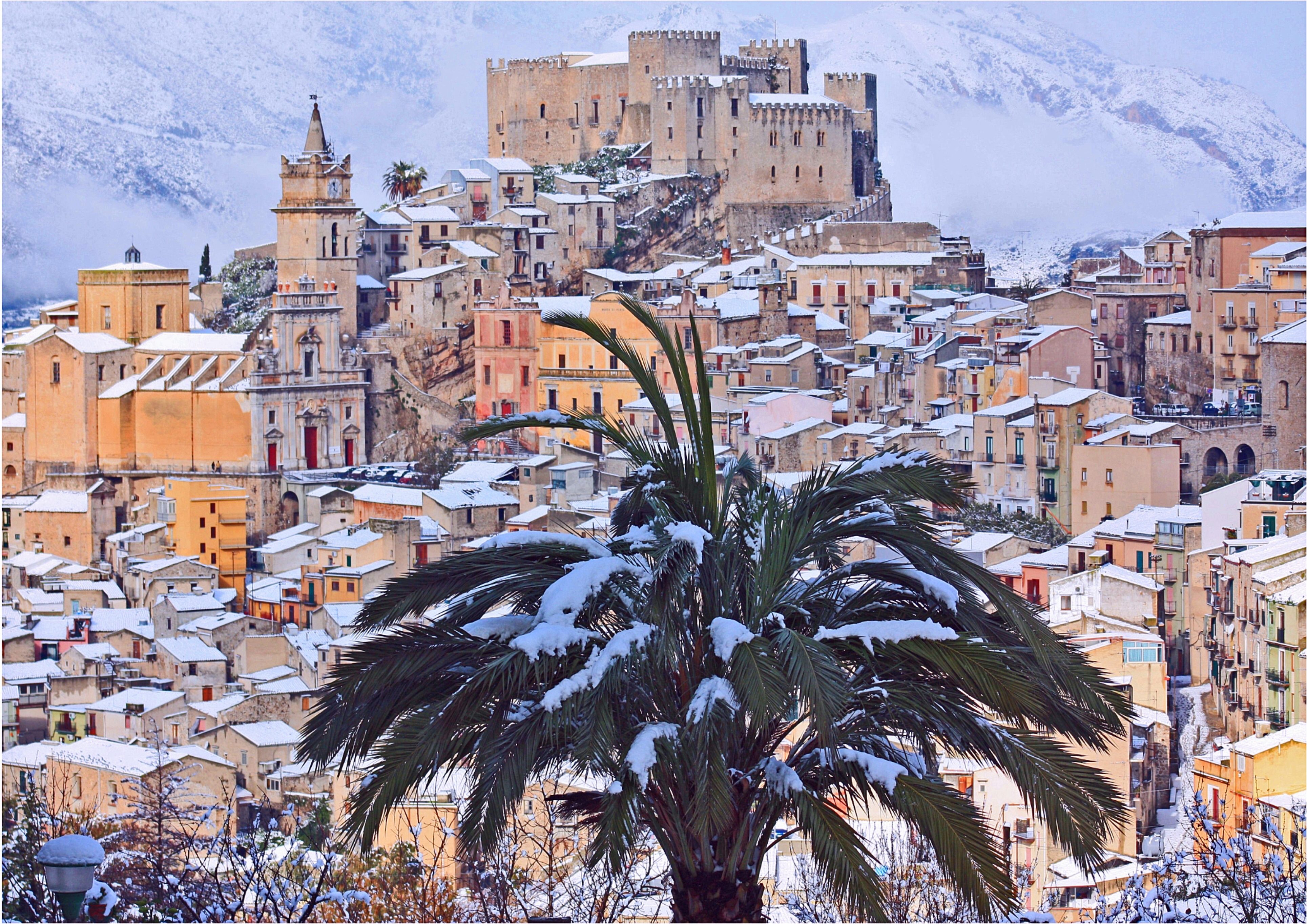
All that the castle shows us to our left along the access ramp is precisely fifteenth-century work. At the beginning of the fifteenth century the lordship of Caccamo passed to the Cabreras under whose rule the city experienced a time of real and profound changes, both economically and socially. In 1641 Don Giovanni Henriquez de Cabrera was appointed Viceroy of Sicily and two years later he elevates Caccamo to a city level
The Henriquez family was followed by the Amato family headed by Don Filippo Amato, Prince of Galati. The Amatos pushed forward additional changes to the Castle as the imposing battlements to the system of walls, while the South part of the castle was completely rebuilt and doomed to a habitual baronial residence, thus losing all traces of medieval architecture. In 1813 the lordship of Caccamo passed to the Spuches family, among them excelled the Prince – Duke Giuseppe, a famous archaeologist and poet, a polished Greek scholar, the husband of Giuseppina Turrisi Colonna, a famous sicilian poet. De Spuches, maecenas and protector, welcomed artists and poets who acted their literary works. After the Amatos, maintenance interventions became less frequent and the degradation of the structures was increasingly progressive.
In 1963 the Prince of Galati and the Duke of Caccamo Antonio De Spuches, unable to cope with the costs of castle restoration, ceded the noble residence to the Sicilian Region. Since then projects have followed for the maintenance of the building. After completing the restoration work the castle is now open to the public.
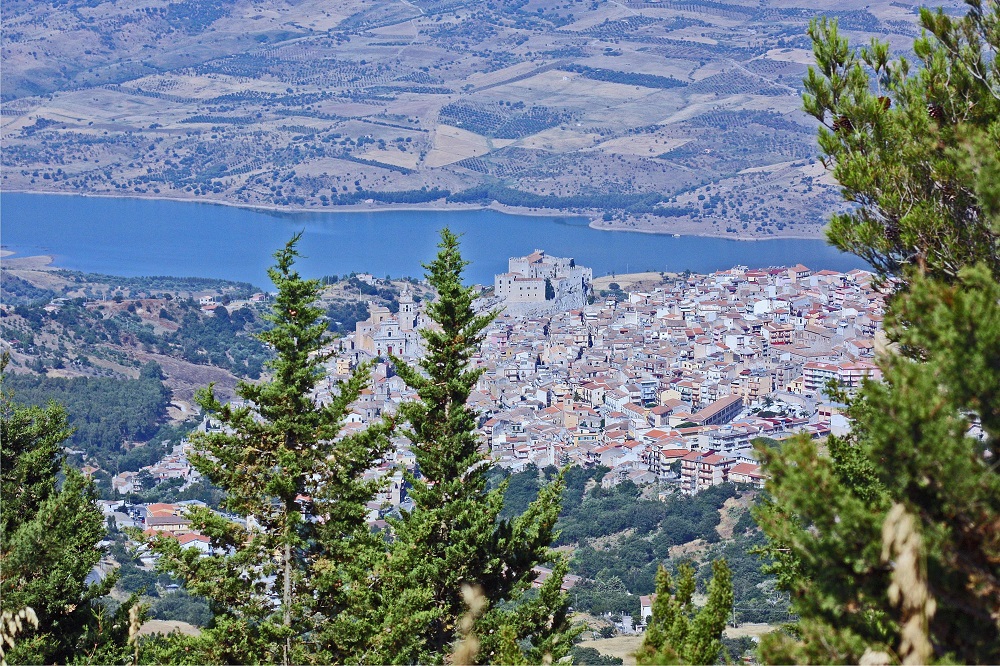
function googleTranslateElementInit() { new google.translate.TranslateElement({pageLanguage: ‘it’, includedLanguages: ‘ar,ca,de,el,en,es,fr,ja,ru,zh-TW’, layout: google.translate.TranslateElement.InlineLayout.SIMPLE}, ‘google_translate_element’);}
